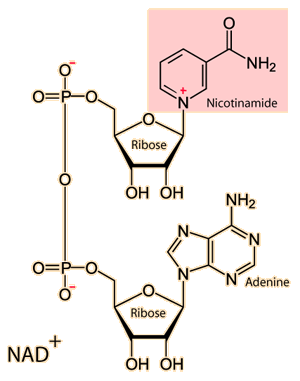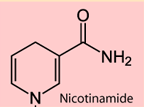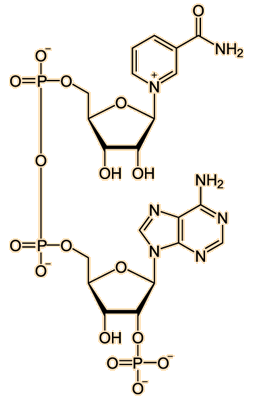NAD (Nicotinamide adenine dinucleotide)
The cellular respiration processes of all living cells make use of the coenzyme Nicotinamide adenine dinucleotide (NAD). It plays a key role in energy metabolism by accepting and donating electrons.
 |  The low energy form NAD+ shown at left is raised to the high energy form NADH. The change in the form of the active nicotinamide group in NADH is indicated above. It accepts two electrons and a hydrogen in reaching the high energy state. The NAD+ is used in redox reactions in the cell and acts as a reducing agent. NADH contributes to oxidation in cell processes like glycolysis to help with the oxidation of glucose. |
NAD+ is mostly used in catabolic pathways, such as glycolysis, that break down energy molecules to produce ATP. The ratio of NAD+ to NADH is kept very high in the cell, keeping it readily available to act as an oxidizing agent. NADH is used in the electron transport chain to provide energetic electrons. | 
|
| NAD wiki |
Organic chemistry concepts
Chemistry concepts
Reference
Karp
Ch 3
| HyperPhysics*****Chemistry | R Nave |


